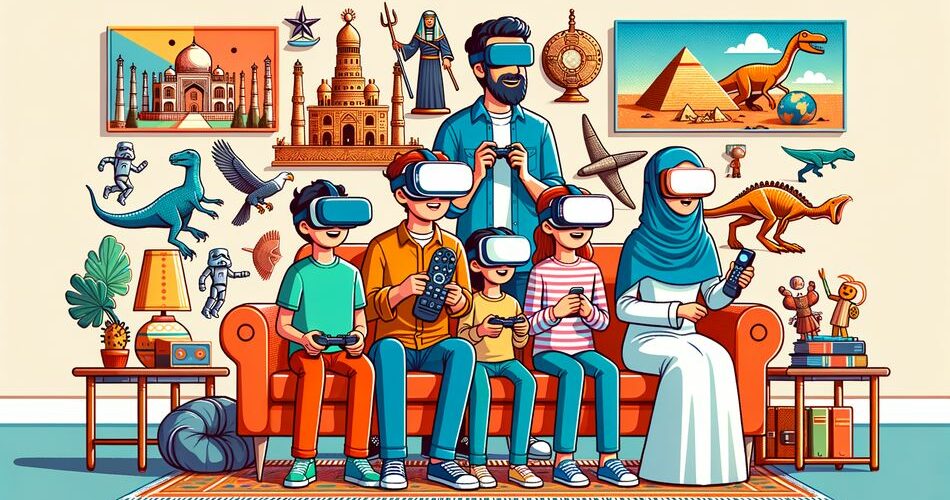Welcome to Growing Together, where we provide expert parenting tips and child development advice. Today, we’re diving into an innovative way for families to bond and learn together: the Family Time Machine, using Virtual Reality (VR) to explore history as a shared experience. Imagine stepping back in time with your children, witnessing historical events firsthand, and making history come alive right in your living room. Let’s explore how VR can transform how you and your family understand and relate to the past.
Introduction to Using VR for Family Learning
Virtual Reality technology has come a long way, and it’s not just for gaming anymore. In recent years, educational applications for VR have exploded, offering immersive experiences that can bring subjects like history to life. This is particularly exciting for families looking to spend quality time together while also helping their children learn. By using VR to explore history, parents and children can engage in a richer, more interactive form of storytelling that beats reading from a textbook.
The Benefits of Exploring History with VR
1. Immersive Learning: VR provides a fully immersive experience, allowing users to “walk” through historical events and places. Imagine visiting Ancient Rome, walking through the bustling streets, or witnessing the signing of the Declaration of Independence. Children are more likely to retain information when they can visualize and “experience” it.
2. Active Participation: Instead of passively reading or watching a documentary, VR encourages active participation. Kids can explore at their own pace, engage with interactive elements, and ask questions in real-time, fostering a deeper understanding of historical events and contexts.
3. Bonding Experience: Using VR to explore history can be a unique bonding experience for families. Parents and children can discuss their experiences, share insights, and learn from each other. This shared activity can strengthen family bonds and create lasting memories.
Getting Started with VR for Historical Exploration
To get started, you’ll need a VR headset and access to educational VR content focused on historical exploration. There are several platforms and apps designed specifically for this purpose:
- Google Expeditions: This app offers a range of VR tours, including historical sites and events. It’s user-friendly and perfect for educational purposes.
- TimeLooper: This app allows users to explore key moments in history, such as the fall of the Berlin Wall or the Great Fire of London, through immersive 360-degree videos.
- The HistoryView: This VR app provides virtual tours of museums and historical landmarks, offering detailed information and interactive elements.
Practical Tips for a Successful VR Learning Experience
1. Choose Age-Appropriate Content: Ensure that the VR content is suitable for your child’s age and maturity level. Some historical events may be too intense for younger children.
2. Set Time Limits: VR can be highly engaging, but it’s important to set time limits to prevent eye strain or fatigue. Short, focused sessions are more effective for learning.
3. Discuss and Debrief: After exploring a historical event or place, take some time to discuss it with your children. Ask open-ended questions to encourage critical thinking and reflection.
Conclusion
The Family Time Machine using VR is a revolutionary way to explore history together, offering immersive learning experiences that are both educational and engaging. By integrating VR into your family’s routine, you can make history come alive, foster a deeper understanding of the past, and create memorable bonding experiences. At Growing Together, we believe in the power of innovative learning tools to support your parenting journey and child’s development. So, strap on your VR headset and get ready to embark on a historical adventure with your family!
Happy exploring!

